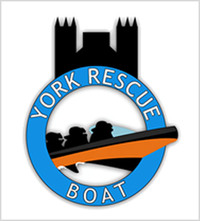Many thanks to The Lowther for facilitating this camera's location and capitally funding its installation. The River Ouse is situated in North Yorkshire. It originates from the convergence of the River Ure at Cuddy Shaw Reach near Linton-on-Ouse, approximately 6 miles downstream from the point where the River Swale meets the River Ure. The river then flows through the city of York and the towns of Selby and Goole before joining the River Trent at Trent Falls, near the village of Faxfleet, to form the Humber Estuary. With a length of approximately 84 km (52 miles), the River Ouse, combined with the Ure, spans about 129 miles, making it the sixth longest river in the United Kingdom. Within York, the river runs for approximately 13 miles, extending from the Parish of Nether Poppleton in the north to Naburn in the south. To facilitate navigation, the York Corporation constructed the first of two locks at Naburn in 1757. Downstream from Naburn Lock, the river experiences tidal influence. In 1989, the responsibility for managing the River Ouse was transferred to British Waterways.The name "York" (Old Norse: Jórvík) derives from the Brittonic name Eburākon, which combines "eburos" meaning "yew tree" (comparable to Old Irish "ibar," Irish "iobhar," "iubhar," and Scottish Gaelic "iubhar"; as well as Welsh "efwr" and Breton "evor," both meaning "alder buckthorn") with the suffix "-āko(n)" denoting "belonging to" or "place of" (similar to Welsh "-og"). These elements together signify "place of the yew trees." In Irish, the city is called "Eabhrac," and in Scottish Gaelic, it is referred to as "Eabhraig," both of which stem from the Latin term "Eboracum." An alternate interpretation posits that the name signifies "the settlement of (a man named) Eburos," a Celtic personal name spelled in various ways in different sources such as Eβουρος, Eburus, and Eburius. Combined with the Celtic possessive suffix "-āko(n)," this word could indicate the property of a man bearing that name.By the 7th century, the name "Eboracum" had transformed into "Eoforwic" in the Anglian language. This term emerged as a combination of "Eofor-" derived from the old name and "-wic" meaning "village." The element "Ebor-" possibly merged with a Germanic root "*eburaz" meaning "boar," hence associating the compound with the concept of a boar village. In Old English, the word for 'boar' had become "eofor." Following the Danish conquest of the city in 866, it was renamed "Jórvík."After the Norman Conquest, the Old French and Norman version of the city's name was recorded as "Everwic" (modern Norman Évèroui) in works like Wace's Roman de Rou. Meanwhile, "Jórvík" gradually transformed into "York" over the centuries following the Conquest, evolving from Middle English "Yerk" in the 14th century to "Yourke" in the 16th century and finally settling on "Yarke" in the 17th century. The form "York" was first documented in the 13th century. Various company and place names, such as the Ebor race meeting, reference the Latinized Brittonic and Roman name.In the fictional account of the prehistoric kings of Britain called Historia Regum Britanniae by Geoffrey of Monmouth, who wrote in the 12th century, it is suggested that the name "York" derives from a pre-Roman city established by the legendary king Ebraucus.
The Archbishop of York uses "Ebor" as his surname in his signature.







